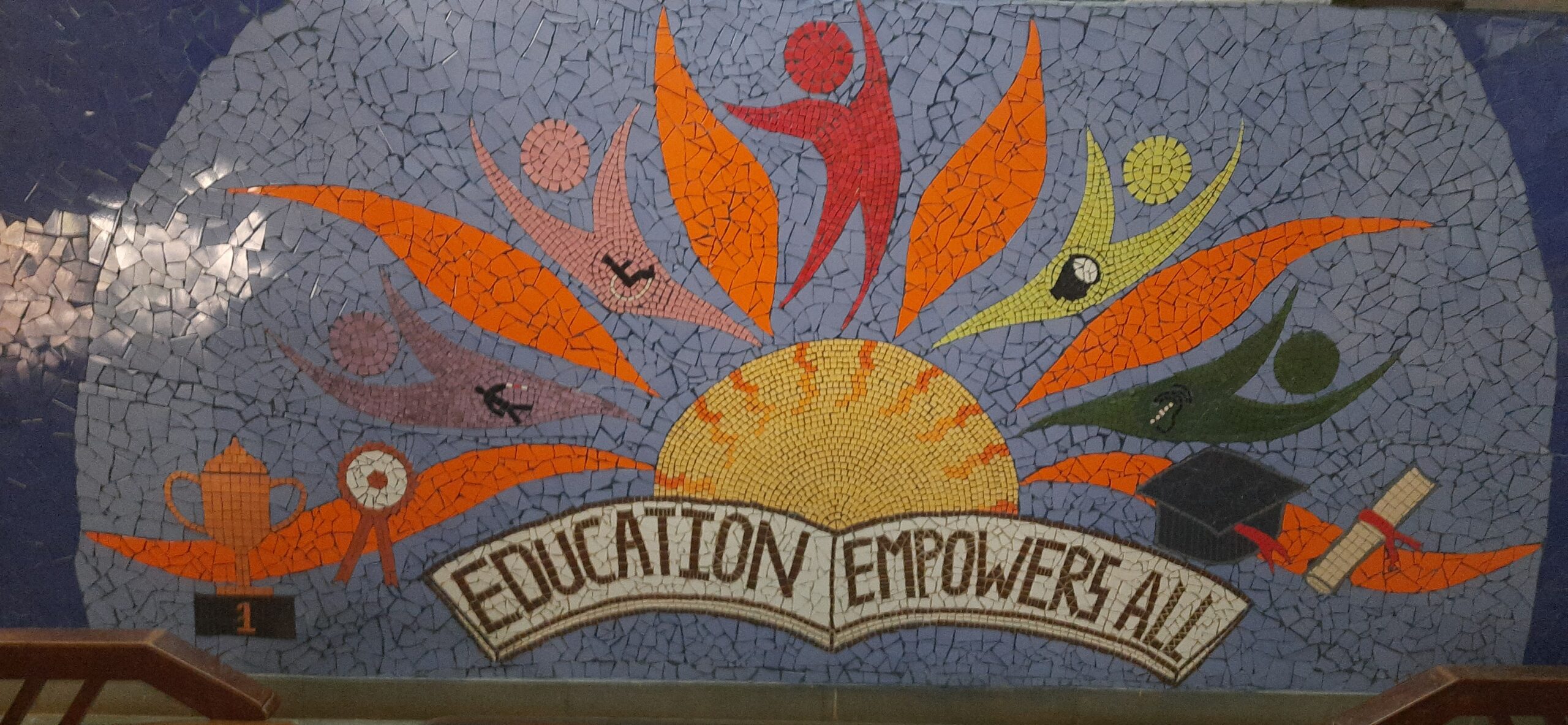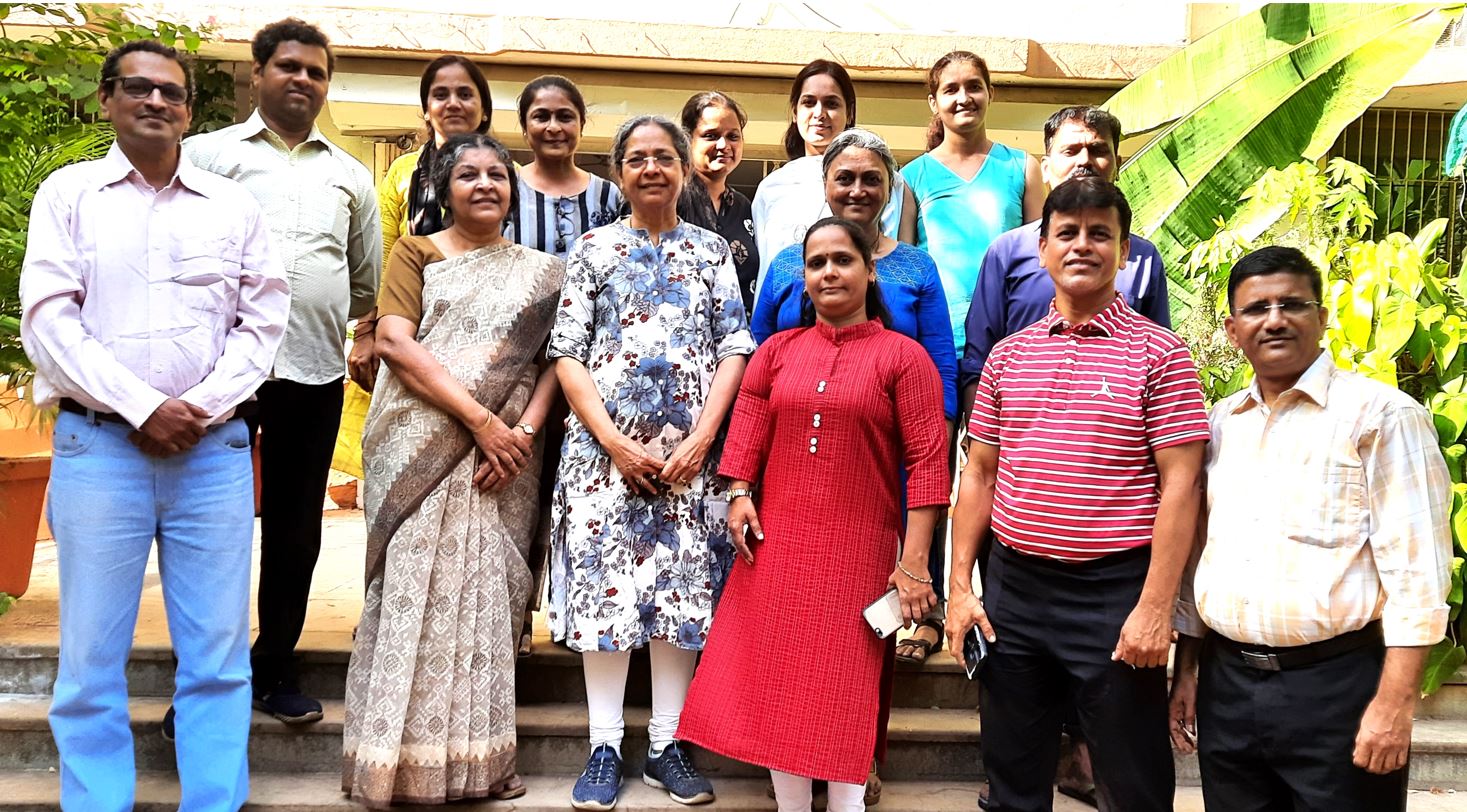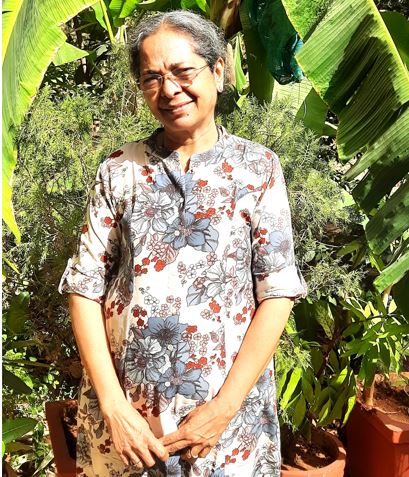Students With Disabilities Show How a Teacher’s 30-Year Crusade Changed Their Lives
Lata Nayak, founder Principal, Rotary Sanskardham Academy for Children with Special Needs (RSA) started this school in 1995. But even today, there is no let-up in Lata’s fervour for the cause she espoused nearly three decades ago.

Pooja Zaveri’s future looked bleak when she was born with hearing impairments in an underprivileged section of society. But the now 18-year-old Pooja is gearing up to appear for the SSC exam. A Karate Champion, she has won many prizes in sports and cultural competitions. President of Gulmohar Interact Club, Pooja is keen on becoming a teacher.
Abhinand Guthi was also born with hearing impairments and multiple disabilities. He was unable to stand or walk properly and relied on his parents for even routine chores. Today at 27, he is working as a Customer Service Associate in a private firm and is independent.
These are just two of many such success stories where disabled children have learnt to overcome their disabilities and lead a near-normal life. This is all thanks to Lata Nayak, founder principal, Rotary Sanskardham Academy for Children with Special Needs (RSA), initially named Sanskardham Vidyalaya for Hearing Impaired.
Of course, it was no cakewalk for her. Yet she forged ahead as these children have always been her concern. Teaching them is her passion and working for their progress is her obsession. Even today, at 68, there is no let-up in Lata’s fervour for the cause she espoused nearly three decades ago.
Catering to every need

After completing her BEd (Deaf) at Ali Yavar Jung National Institute for the Hearing Handicapped, Mumbai, in 1987, Lata went to the US on a Rotary scholarship and obtained her master’s at Smith College Massachusetts. Ignoring the lucrative opportunities, she returned to India to work for the children. In 1995, she established the school with the Parents & Teachers Association in a shed in Goregaon, Mumbai, with 24 students. Today, it is a full-fledged academy housed in a four-floor complex, with a junior college, vocational training centre along with an audiology and speech therapy unit, gymnasium, computer lab, science lab, library, etc.
As of now, there are 140 students, of which 30 per cent have multiple disabilities like autism, slow learning, mild mental retardation and spasticity. Around 95 per cent of them are from lower-income groups. Originally set up for the hearing impaired, the school soon began to admit children with other disabilities too. “When many children with multiple disabilities began to troop in, I could not turn them away, more so, as no other school was ready to accept them. Of course, teaching them is not easy, as each child needs individual attention. But these children are capable of doing many things, if we give them proper education, equip them with skills, and provide them with opportunities,” says Lata.
RSA is reportedly the only school in Mumbai catering to hearing-impaired students with multiple disabilities.
Abhinand Guthi, one such student, is ever grateful to Lata as are his parents. “Abhinand was just two years old when we took him to Lata,” recalls Gayathri Guthi, his mother. “When everyone else had given up, it was only Lata who gave us hope. Apart from physiotherapy, she made him do exercises, play games and used various teaching methods. At six Abhinand began to walk and even run. Later he completed his HSC, joined computer classes, and got a job after completing the course. All this would not have happened but for Lata. She has her way of dealing with each child.”
Innovative need-based teaching

Evidently, her innovative teaching methods have worked wonders. “Giving them book knowledge and making them pass exams is not enough. I focus more on practical knowledge and its application, teaching with visual aids that make it interesting and easy to absorb. I also make them do things on their own to stimulate their creativity,” explains Lata, who has evolved need-based methods, depending on a student’s abilities, disabilities and interests.
In addition, a combination of sign and spoken language is used. “Children do understand faster if they are taught in sign language, but they lag in literacy and communication skills. We cannot rely on spoken language either as the hearing aids help them only to a certain extent. Hence a balance must be maintained. This dual method helped us immensely while conducting online classes during the lockdown,” asserts Lata. RSA also trains the students in gymnastics, sports and cultural activities, including cricket, football, karate, Mallakhamba, painting, dancing and drama.
As a result, several students have been integrated into regular schools. While the majority are trained for regular SSC/HSC board exams, some with severe multiple disabilities are sent for the National Institute of Open Schooling (NIOS), exam. Some have also graduated. Three students from well-off families have gone to Gallaudet University, US, for higher education. The students who participate in many sports and cultural competitions have won a string of trophies and medals. Many have also been employed largely in the hospitality/retail sector. RSA is also focusing on self-employment and training students in IT, ITES, retail, tailoring, drawing/painting, dance, drama, cookery, etc, in association with corporates, professionals and volunteers.
A dream comes true
Lata’s achievements and commitment to the cause fetched her many awards, including the National Award for Best Teacher (2006) and Best Individual Working for Disability (2011). It was this successful track record that made the Rotary Club of Mumbai, Queen’s Necklace, (RCQN) extend their support in 2005. RCQN funded and developed the new building.
“It is commendable that the school is catering to the hearing impaired and children with other disabilities. We also observed how Lata has changed many children’s lives and were impressed by her dedication and vision,” says Arun Todarwal, past president, RCQN, who was instrumental in initiating the project during his term as President in 2005-06. The building was completed in 2012.
Sanskardham Kelavani Mandal (SKM) provided the land free of cost for the academy. SKM has been supporting RSA from day one when they offered the shed on their campus to start the school. “I am indeed grateful to Arun Todarwal, RCQN and Kelavani Mandal for making our dream come true,” says Lata.
Aiming higher

It became tougher when Lata retired in 2011 and had to appoint a younger principal to continue to avail the government grant and provide free education. However, many parents requested her to continue and some agreed to pay the fees. But since the majority hailing from lower-income groups could not pay the fees, it did not help much. Since then RSA has been relying on sponsorships and donations.
As a result, they were unable to pay the teachers’ salaries as per the 7th Pay Commission and many teachers quit. Lata had to manage with a few dedicated teachers, staff members and volunteers.
Milan Mahadik, who looks after administrative work and Sitaram Chavan, the Karate and sports instructor, who have been part of Lata’s mission since its inception, stayed put. A few new teachers joined in, one of them being Abhay Yawalkar who has been teaching Science for the last year. “These children can also go forward in the science stream and even have their own startup someday. It is easy to teach them science, as it is more practical oriented,” states Yawalkar. While Bharat More from Kanchan Sontakke Natyashala trains the students in acting in Marathi plays, volunteers like Meeta Kapur and Rupa Sengupta teach the children tailoring, quilling, crochet etc.
Many individual donors, including Lata’s family members, have pitched in too. It is no doubt that her family has been her pillar of strength. “I would not have come this far if not for my husband Shashikant and my in-laws’ support,” says Lata.
Still, there is a long way to go. One of her goals is to make the institution self-sufficient, as Mr Todarwal rightly pointed out, “RSA cannot rely on donations forever. Hence, we are looking at various options to make it self-sustaining.” Lata agrees that this is yet another milestone to be crossed.

Written by Janaki Krishnamoorthi; Edited by Yoshita Rao
If you found our stories insightful, informative, or even just enjoyable, we invite you to consider making a voluntary payment to support the work we do at The Better India. Your contribution helps us continue producing quality content that educates, inspires, and drives positive change.
Choose one of the payment options below for your contribution-
By paying for the stories you value, you directly contribute to sustaining our efforts focused on making a difference in the world. Together, let’s ensure that impactful stories continue to be told and shared, enriching lives and communities alike.
Thank you for your support. Here are some frequently asked questions you might find helpful to know why you are contributing?


This story made me
-
97
-
121
-
89
-
167











